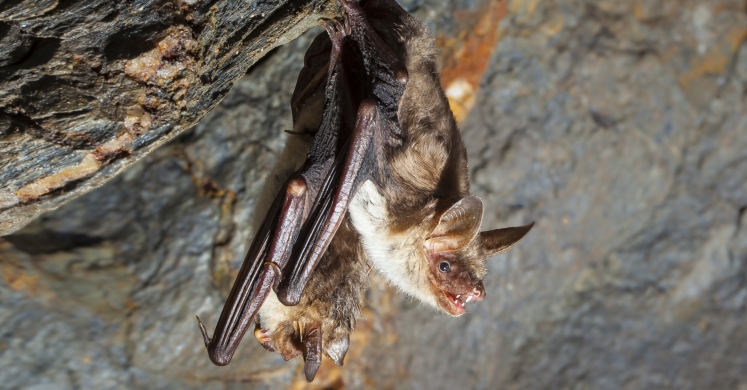Blog

#bioPGH Blog: Bats
 A resource of Biophilia: Pittsburgh, #bioPGH is a weekly blog and social media series that aims to encourage both children and adults to reconnect with nature and enjoy what each of our distinctive seasons has to offer. From the best times to plant seasonal flora and enjoy their peak blooms, to astronomical events and creatures to keep an eye and ear out for, Phipps will keep you in the know with what’s going on in our environment!
A resource of Biophilia: Pittsburgh, #bioPGH is a weekly blog and social media series that aims to encourage both children and adults to reconnect with nature and enjoy what each of our distinctive seasons has to offer. From the best times to plant seasonal flora and enjoy their peak blooms, to astronomical events and creatures to keep an eye and ear out for, Phipps will keep you in the know with what’s going on in our environment!
It’s not Halloween yet, but that won’t stop bats! This time of year you’ll see them swooping over your head to gobble up dinner — and to some bats, "dinner" means consuming 1,200 mosquitoes an hour! Over 1,300 bat species exist worldwide, making them the second largest group of mammals in the world after rodents. Bat forelimbs (the equivalent of human hands) form webbed wings, which are flexible structures that allow high maneuverability. In fact, the bat order Chiroptera is derived from Greek, meaning "hand wing."
Another fascinating trait of many bats is their use of echolocation, the process by which they find prey and navigate through the night. Similar to sonar, a bat sends out high frequency calls that "echo" back, allowing it to create a sonic landscape of its surroundings. A 2014 study in Current Biology found that some species of Old World fruit bats, previously considered non-echolocating bats, do in fact echolocate, likely more for navigation than finding food.
Several bat species are found in Pennsylvania; some, like Myotis lucifugus, the little brown bat, hibernate in caves during the winter, while others, like Lasiurus borealis, the red bat, will migrate to warmer climates. Bats are everywhere, and humans need them: insectivorous bats are a form of natural pest control, eating vast numbers of mosquitoes and crop pests, while nectar-feeding bats in deserts and the tropics are important pollinators for many plants. Unfortunately, bat populations are declining due to several factors including habitat loss, disease, wind turbine collisions and overhunting (internationally). A recent study suggested that the loss of bat populations could lead to agricultural losses of up to $3.7 billion per year.
Connecting to the Outdoors Tip: It’s easiest to see bats at dusk; you’ll notice their distinctively erratic flight patterns in the night sky while they hunt insects. Bats are fun to watch, but more importantly, they need your help! Many North American bat species have been hit hard by White Nose Syndrome, caused by an opportunistic fungus that infects bats in the winter, causing them to wake up frequently during hibernation and use up precious energy reserves. Hungry bats leave the caves in February or March when food isn’t yet available. The fungus was first detected in a cave near Albany, NY in 2006, and has since spread rapidly among bat populations across the United States; mortality rates from the infection have been as high as 99%! Fortunately, scientists have had some success in treating bats.
How can you help bats? For starters, build a bat house! During the summer, female bats seek out small, dark spaces to give birth and raise their young. Learn more about bats to dispel many of the common myths. They may not be native to Pennsylvania, but The National Aviary currently has Malayan flying foxes (fruit bats native to Asia which have wingspans of five feet!) on display. At first they may seem a bit intimidating, but watching them munch on papayas as they crawl around upside down on the ropes is really entertaining!
Continue the Conversation: Share your nature discoveries with our community by posting to Twitter and Instagram with hashtag #bioPGH, and R.S.V.P. to attend our next Biophilia: Pittsburgh meeting.
Additional Resources:
Nonecholocating Fruit Bats Produce Bisonar Clicks with Their Wings | Current Biology
Economic Importance of Bats in Agriculture | Science Magazine
Bat Conservation International
What Is Echolocation? | ASU School of Life Sciences
White-Nose Syndrome | USGS National Wildlife Health Center
Success in Saving Bats From White-Nose Syndrome | The Nature Conservancy
Select photos by U.S. Fish and Wildlife Service

